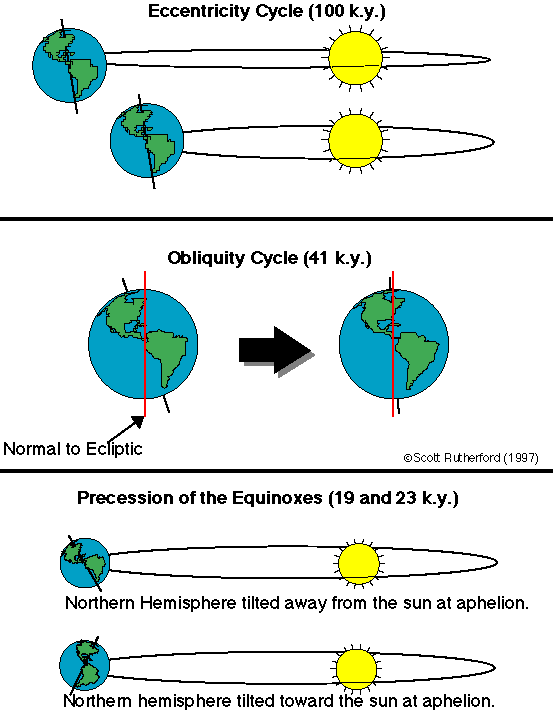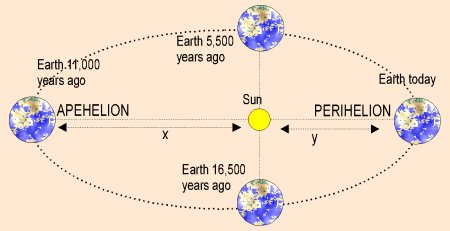What are Milankovitch cycles?
1 Answer
Milankovitch cycles refer to long term variations in the orbit, axial tilt, and wobble of the Earth, resulting in changes in climate over periods hundred of thousands of years.
Explanation:
Milankovitch cycles refer to long term variations in the orbit, axial tilt, and wobble of the Earth. These variations contribute to climate patterns on Earth.
Changes in the elliptical pattern the planet takes around the sun are referred to as eccentricity . If the earth travels in a pattern that is more elliptical, it will pass closer to the sun than if it traveled on a more circular path (see image below). Eccentricity operates on a cycle lasting approximately 100,000 years.
Obliquity refers to changes in the tilt of Earth's axis. The tilt of the planet changes 2.5 degrees over 41,000 years.
Precession is the term that describes the wobble of Earth on its axis. The planet is not truly a sphere, thus the gravitational pull of the sun and Earth's moon cause this slight wobble. This cycle lasts roughly 26,000 years.

These changes contribute to ice ages or warmer periods on the planet. When the planet spends more time closer to the sun, this is referred to as perihelion and the planet is in a time of warming. When the planet spends more time further away from the sun, this is aphelion and this typically corresponds to what we refer to as an ice age.


